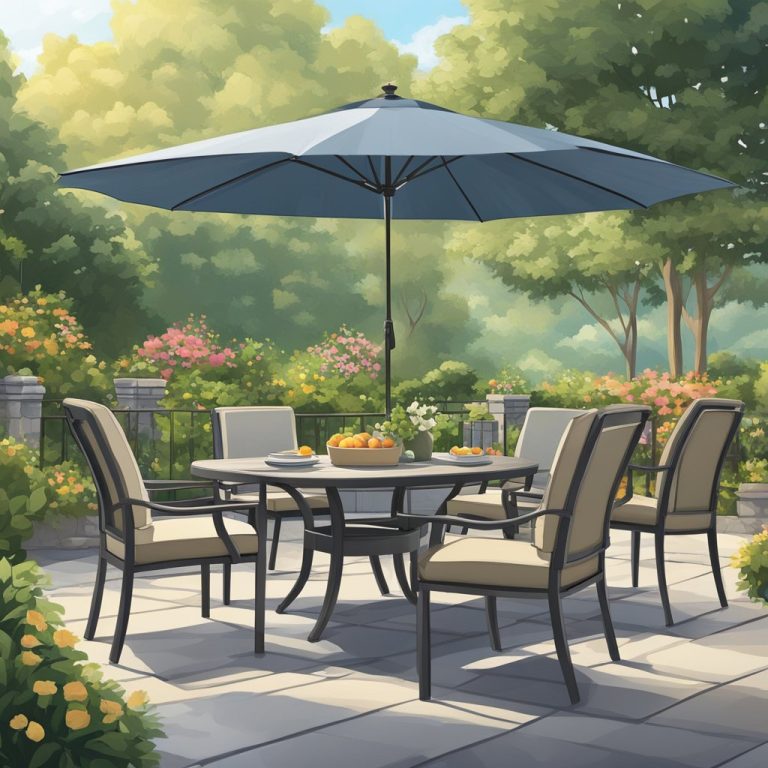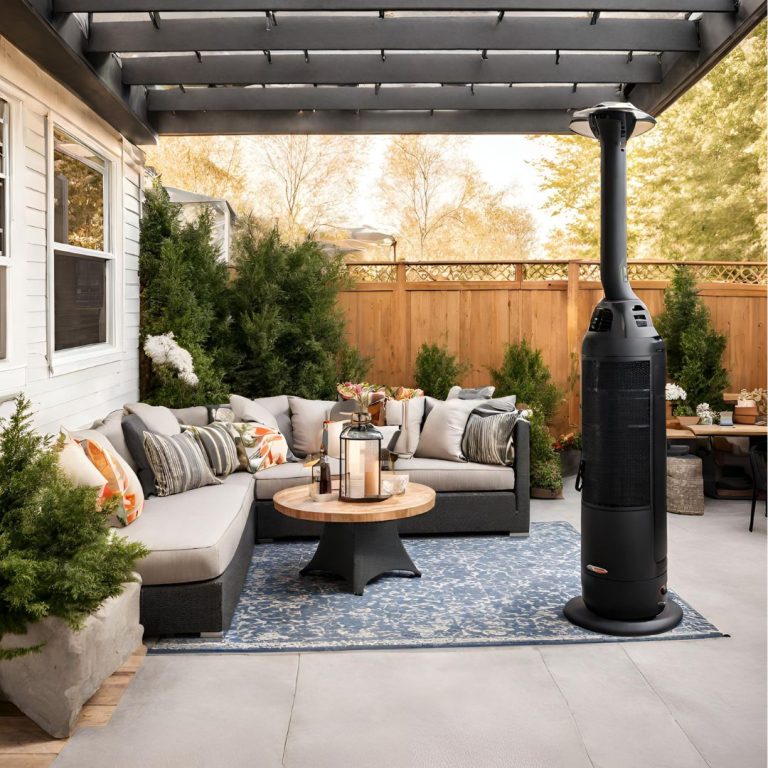How to Clean and Care for Wicker Outdoor Furniture: Tips and Tricks
How to Clean and Care for Wicker Outdoor Furniture: Tips and Tricks

If you’re lucky enough to have outdoor wicker furniture, you know how beautiful and comfortable it can be. But, like all outdoor furniture, it requires special care and maintenance to keep it looking great season after season. To help you get the most out of your wicker furniture, we’ve put together this guide on how to clean and care for it.
Routine Cleaning and Maintenance To keep your wicker furniture looking great, you’ll need to perform some routine cleaning and maintenance. This includes regularly dusting and vacuuming your furniture to remove dirt and debris. You can also use a soft-bristled brush to gently scrub away any stubborn dirt or stains. Additionally, you’ll want to keep your furniture out of direct sunlight and away from extreme temperatures and moisture to prevent it from fading or warping.
Deep Cleaning Techniques In addition to routine cleaning, you’ll also need to perform deep cleaning on your wicker furniture from time to time. This involves using a mild cleaning solution and a soft cloth or sponge to remove any dirt or stains that have accumulated over time. You may also need to use a toothbrush or other small brush to get into the crevices of your furniture. Be sure to rinse your furniture thoroughly with clean water and allow it to dry completely before using it again.
Key Takeaways
- Regularly dust and vacuum your wicker furniture to remove dirt and debris.
- Use a mild cleaning solution and a soft cloth or sponge to deep clean your furniture.
- Store your wicker furniture in a cool, dry place during the off-season to prevent damage from the elements.
Routine Cleaning and Maintenance
Keeping your wicker outdoor furniture clean and well-maintained is essential to extend its lifespan and keep it looking beautiful. Regular cleaning and care will help prevent dirt, dust, and other debris from accumulating on the surface of your furniture, which can lead to discoloration and damage over time.
Regular Cleaning Process
To keep your wicker furniture looking its best, it’s important to clean it regularly. Use a soft brush attachment on your vacuum to remove any loose dirt and debris. You can also use a soft-bristled brush to gently scrub the wicker, taking care not to damage the fibers. Alternatively, you can use a microfiber cloth to wipe down the surface of your furniture.
Handling Common Stains and Spills
If your wicker furniture becomes stained or soiled, you can use a mild detergent solution to clean it. Mix a small amount of mild dish soap with warm water, then use a soft cloth or sponge to gently scrub the affected area. Rinse the wicker with a clean, damp cloth and allow it to air dry.
For tougher stains or spills, you may need to use a more specialized cleaning solution. For example, you can mix equal parts white vinegar and water to remove mildew stains from wicker furniture. Apply the mixture to the affected area, then use a soft brush to scrub the stain away.
Protecting Wicker from the Elements
To keep your wicker furniture looking its best, it’s important to protect it from the elements. If you live in a humid climate, consider using a dehumidifier to remove excess moisture from the air. You can also use a furniture cover to protect your wicker from rain, snow, and other harsh weather conditions.
In addition, you should avoid placing your wicker furniture in direct sunlight, which can cause the fibers to dry out and become brittle. Instead, place your furniture in a shaded area, or use an umbrella to provide shade. By taking these simple steps, you can keep your wicker outdoor furniture looking beautiful for years to come.
Deep Cleaning Techniques
When it comes to deep cleaning your wicker outdoor furniture, you want to make sure you are using the right techniques to remove tough stains and revive worn-out wicker. Here are some effective methods for getting your wicker furniture looking like new again.
Removing Tough Stains
If your wicker furniture has tough stains that won’t come out with regular cleaning, you can try these methods:
- For natural wicker, mix warm water with a small amount of white vinegar or ammonia to create a cleaning solution. For synthetic wicker, use soapy water.
- Dip a toothbrush into the cleaning solution and scrub the stained area gently. Avoid using too much water, as this can cause the wicker to warp or rot.
- Rinse the area with a damp cloth and let it air dry completely.
If the stain is particularly stubborn, you can try using a small amount of bleach mixed with water. However, be sure to test this on a small, inconspicuous area first to make sure it doesn’t damage the wicker.
Reviving Worn-Out Wicker
Over time, wicker furniture can become worn out and lose its luster. To revive your wicker furniture, follow these steps:
- Mix warm water with a small amount of dish detergent to create a cleaning solution.
- Dip a soft-bristled brush into the cleaning solution and scrub the wicker gently, paying special attention to any areas with built-up grime or dirt.
- Rinse the furniture with a garden hose and let it air dry completely.
If your wicker furniture is particularly worn out, you can try using a furniture polish or oil to restore its shine. Just be sure to test this on a small, inconspicuous area first to make sure it doesn’t discolor or damage the wicker.
By following these deep cleaning techniques, you can keep your wicker outdoor furniture looking great for years to come.
Repair and Restoration
Wicker outdoor furniture can last for years with proper maintenance. However, it is not uncommon for wicker furniture to experience minor damages such as broken or loose weaves, cracks, or splits. The good news is that these damages can be easily fixed with the right tools and materials.
Fixing Minor Damages
If you notice any loose or broken weaves, you can fix them by applying a small amount of wood glue to the affected area and pressing the weave back into place. Hold the weave in place until the glue dries. For cracks and splits, use a small amount of wood glue to fill the crack or split, and then sand the area smooth once the glue has dried.
Repainting and Finishing Wicker Furniture
If your wicker furniture has lost its luster, repainting and finishing can bring it back to life. Before you begin, make sure the furniture is clean and dry. Use a soft-bristle brush to scrub the entire item with a mix of warm water and mild detergent, taking care to get in between any dirty reeds of cane, and then hose it down and let it dry overnight.
Once your wicker furniture is clean and dry, the next step is to prep it for a paint job. If you are using spray paint, use a primer specifically designed for wicker furniture. If you are using regular paint, use a sealer or polyurethane to protect the paint from moisture and UV rays. After the sealer or polyurethane has dried, you can apply your desired paint color.
For a natural look, you can stain your wicker furniture. Choose a stain color that complements the furniture’s natural color. Apply the stain with a brush or rag, and then wipe away any excess. Once the stain has dried, apply a sealer or polyurethane to protect the furniture from moisture and UV rays.
To maintain the finish, apply a coat of automotive wax every few months. This will help protect the furniture from the elements and keep it looking great for years to come.
In summary, repairing and restoring wicker outdoor furniture is easy with the right tools and materials. Fixing minor damages with wood glue and sanding, and repainting and finishing wicker furniture can bring it back to life. By following these tips, you can extend the life of your wicker furniture and keep it looking great for years to come.
Seasonal Care and Storage
When it comes to caring for your wicker outdoor furniture, it’s important to remember that proper care and storage will help extend its lifespan. Seasonal care and storage play a crucial role in ensuring that your furniture stays in great condition for years to come. Here are some tips to help you care for and store your wicker outdoor furniture.
Preparing for Changing Weather
As the seasons change, so does the weather. Rain, humidity, and UV damage can all take a toll on your wicker outdoor furniture. To protect your furniture from the elements, consider investing in cushions and covers. These can provide added protection against rain and humidity, as well as UV damage.
If you’re looking for added protection, consider using performance fabric for your cushions and covers. Performance fabric is designed to withstand the elements and can help protect your furniture from moisture and UV damage.
Proper Storage Solutions
When it’s time to store your wicker outdoor furniture for the season, it’s important to do so properly. Improper storage can lead to rust, mold, and other damage. To avoid these issues, make sure your furniture is clean and dry before storing it.
Consider storing your furniture in a dry, cool place, such as a garage or basement. If you don’t have the space for indoor storage, consider investing in a furniture cover. A furniture cover can help protect your furniture from the elements and keep it clean and dry.
By following these tips for seasonal care and storage, you can help ensure that your wicker outdoor furniture stays in great condition for years to come.
Frequently Asked Questions
What cleaning solutions are recommended for outdoor wicker furniture?
Mild soap and warm water are recommended for cleaning outdoor wicker furniture. You can mix a solution of mild dish detergent and warm water to spot-clean heavily soiled areas. For an all-purpose cleaning solution, mix 1/4 cup of liquid dish soap and two cups of warm water. Dip a soft cloth or sponge into the solution and wipe down the furniture. Rinse with a clean, damp sponge or rag. Avoid using harsh chemicals or abrasive cleaners that can damage the wicker.
Can outdoor wicker furniture be cleaned with a hose, and if so, how?
Yes, outdoor wicker furniture can be cleaned with a hose. First, remove any cushions or soft furnishings from the furniture. Use a soft bristle brush to remove debris, dirt, and pollen from the sofa frame. Then, use a garden hose to rinse off the furniture. Avoid using high-pressure water that can damage the wicker. After rinsing, allow the furniture to dry completely before using it.
How can I maintain and protect wicker patio furniture from weather damage?
To protect wicker patio furniture from weather damage, it is recommended to keep it covered or stored indoors when not in use. Exposure to sunlight and moisture can cause the wicker to fade, crack, or become brittle over time. If you must leave your wicker furniture outside, consider using a furniture cover or placing it in a shaded area. Regularly clean and maintain the furniture to prevent dirt and debris from accumulating on the surface.
What are the best practices for restoring and reviving dried-out wicker furniture?
To restore and revive dried-out wicker furniture, you can use a soft-bristle brush to remove any loose dirt or debris. Then, use a spray bottle to mist the wicker with water. This will help to rehydrate the material and make it more pliable. If the wicker is severely dried out, you can soak it in warm water for several hours. After soaking, allow the furniture to dry completely before using it.
Is linseed oil suitable for treating wicker furniture, and how should it be applied?
Linseed oil is suitable for treating wicker furniture. It can help to moisturize and protect the wicker from moisture damage. To apply linseed oil, first, clean the furniture with a soft-bristle brush and mild soap and water. Then, use a clean cloth to apply a thin layer of linseed oil to the wicker. Allow the oil to soak in for several hours before wiping off any excess with a clean cloth.
How should painted or coated wicker furniture be cleaned without damaging the finish?
To clean painted or coated wicker furniture, use a soft-bristle brush or cloth and mild soap and water. Avoid using abrasive cleaners or harsh chemicals that can damage the finish. Rinse the furniture with a clean, damp sponge or rag. Allow the furniture to dry completely before using it. If the finish is damaged, you can touch it up with paint or a clear coat of varnish.






